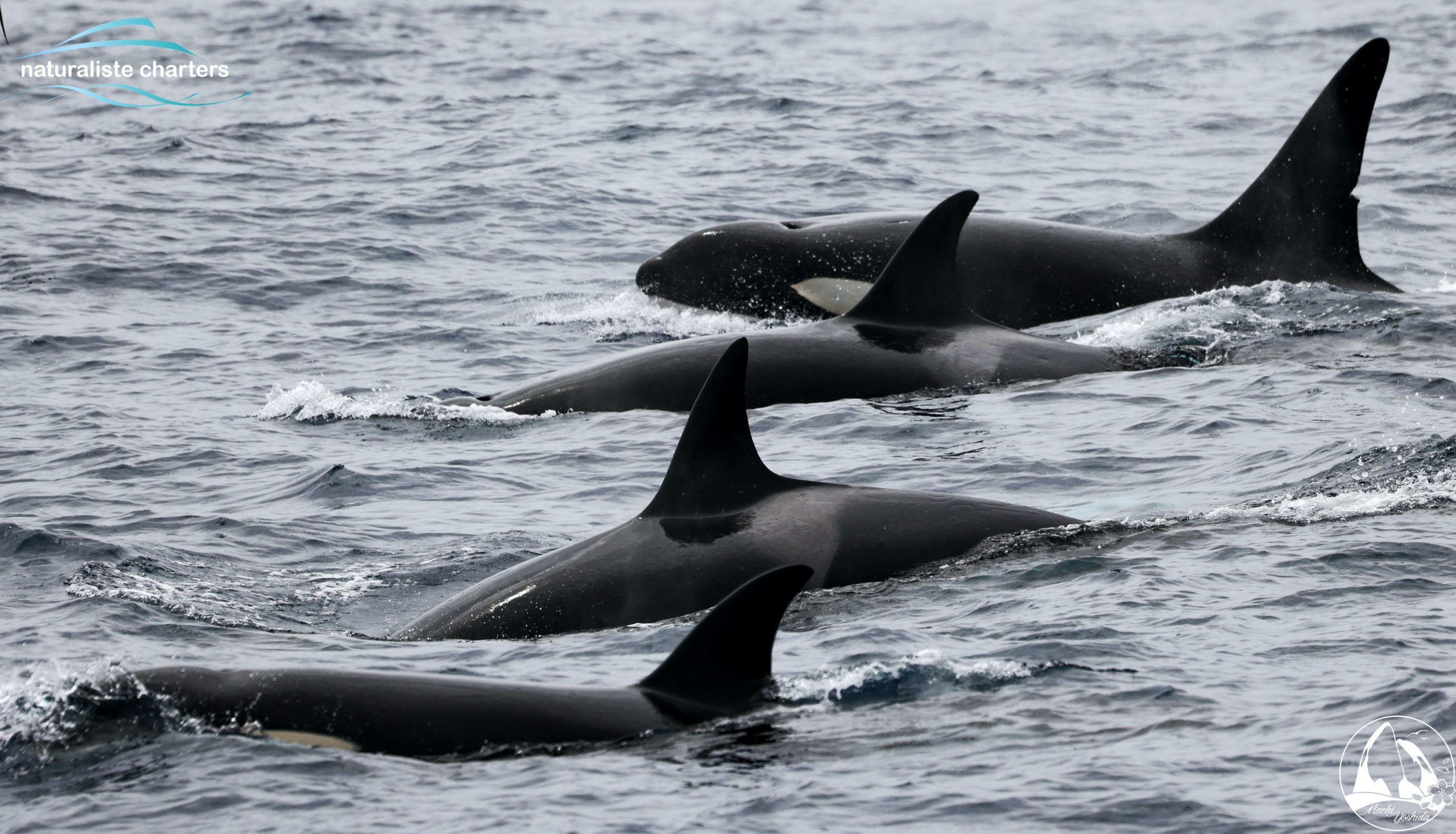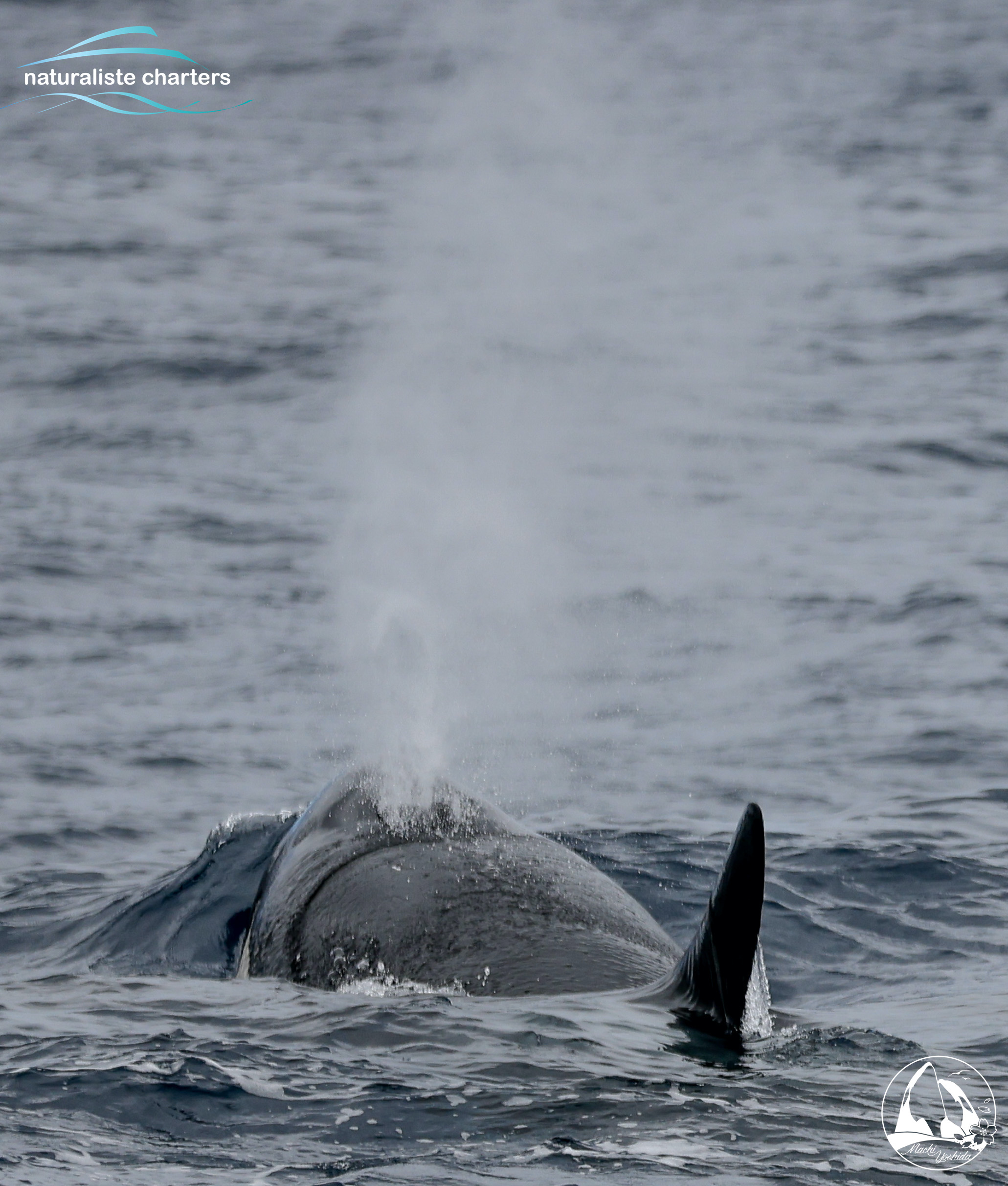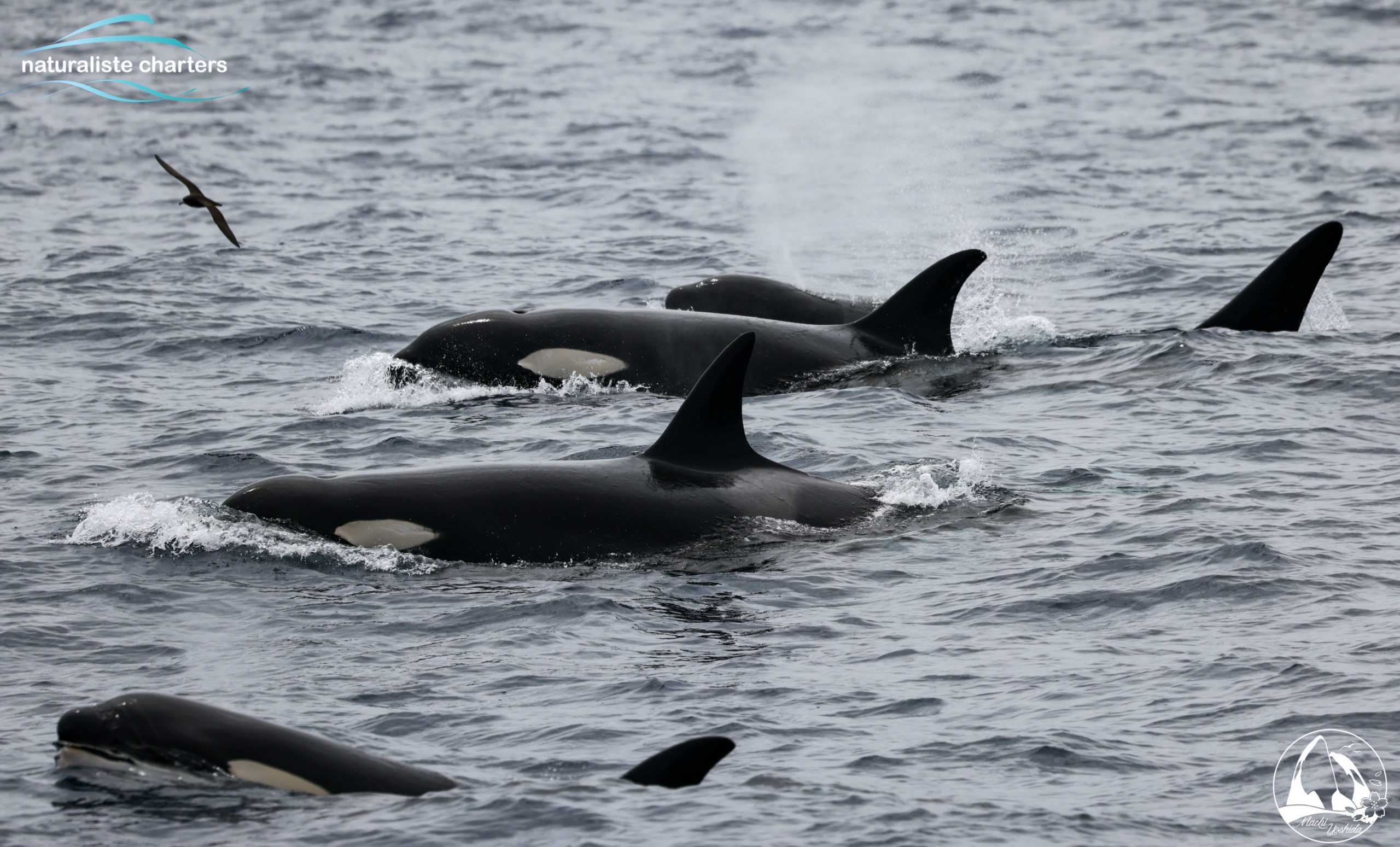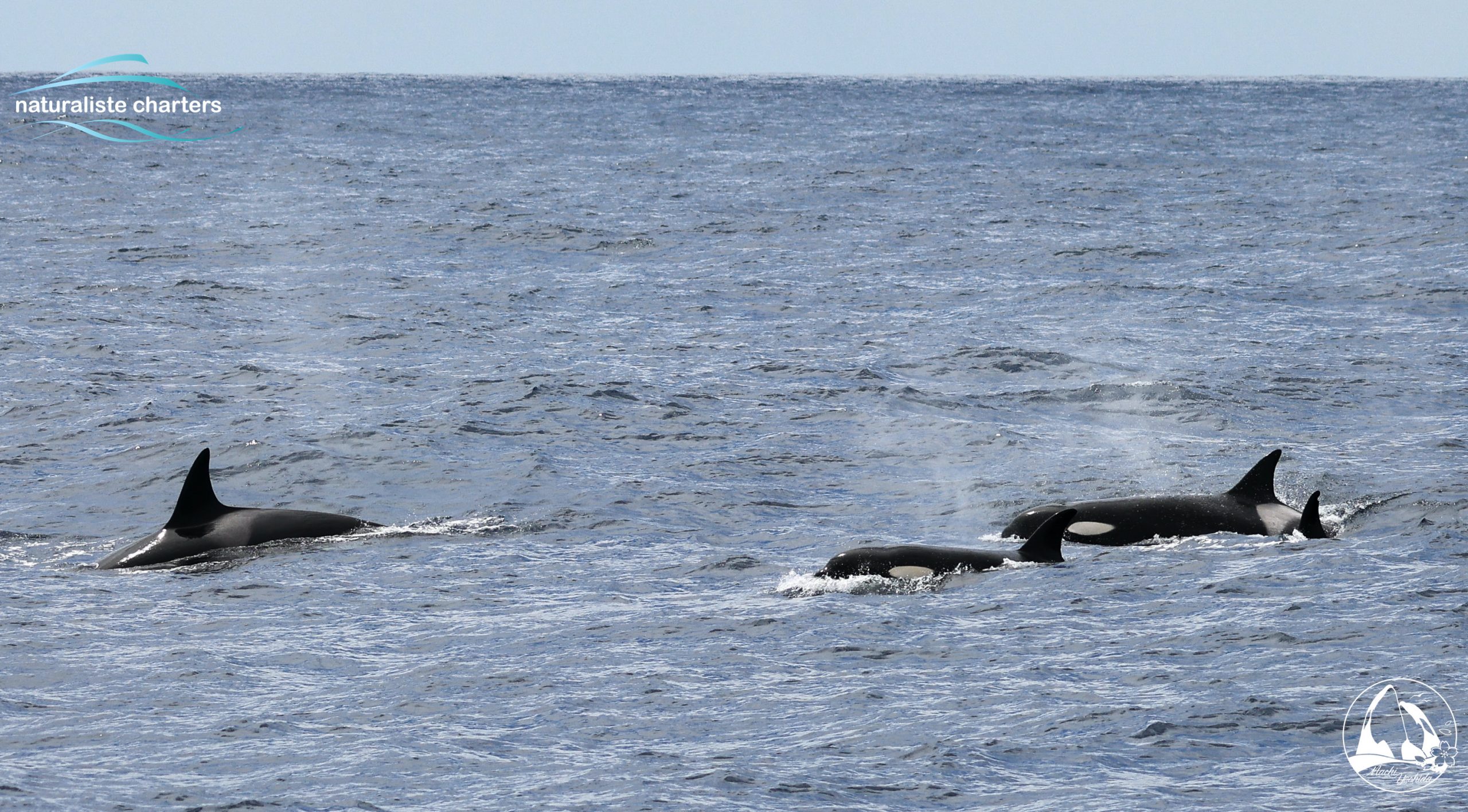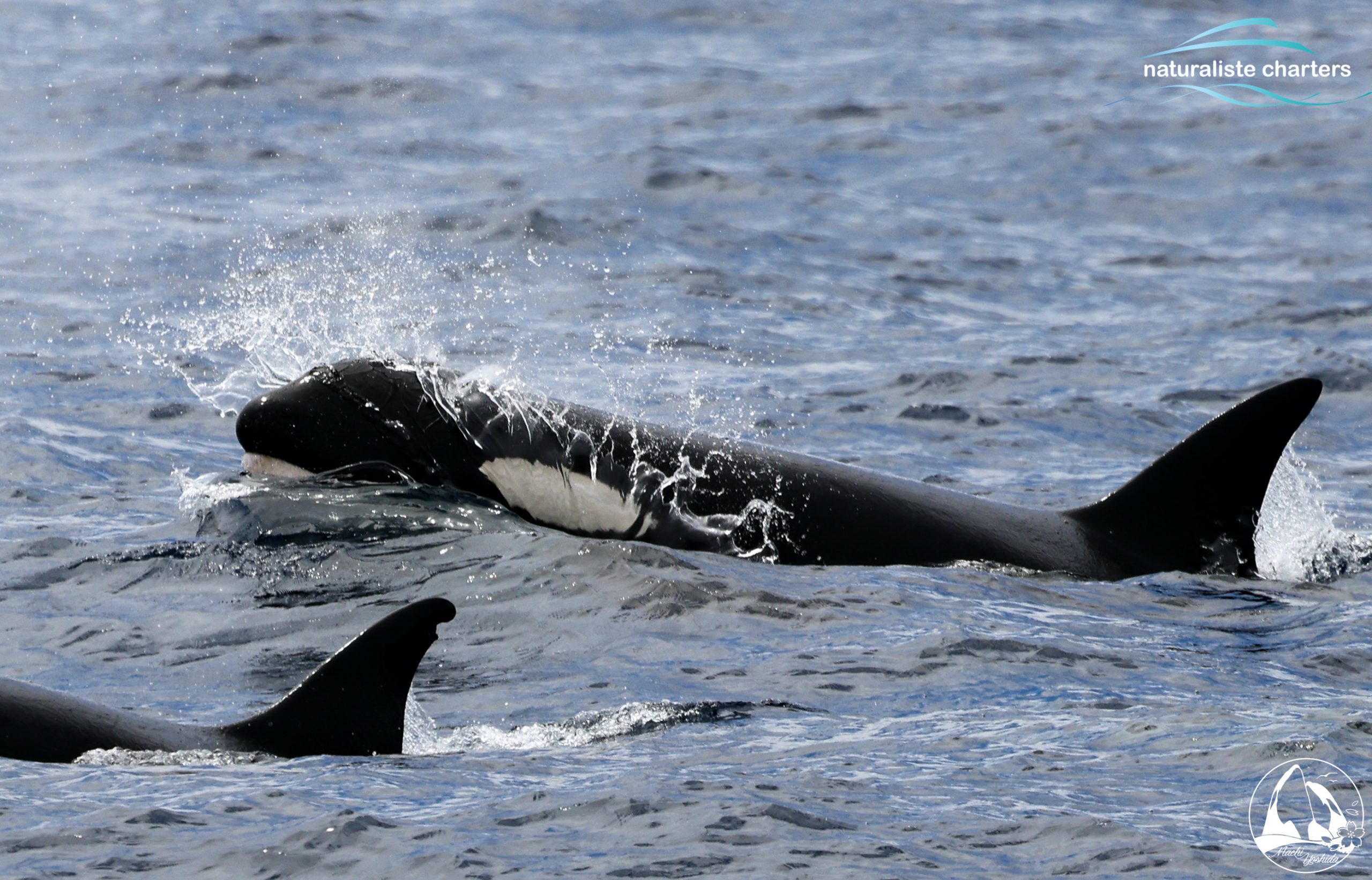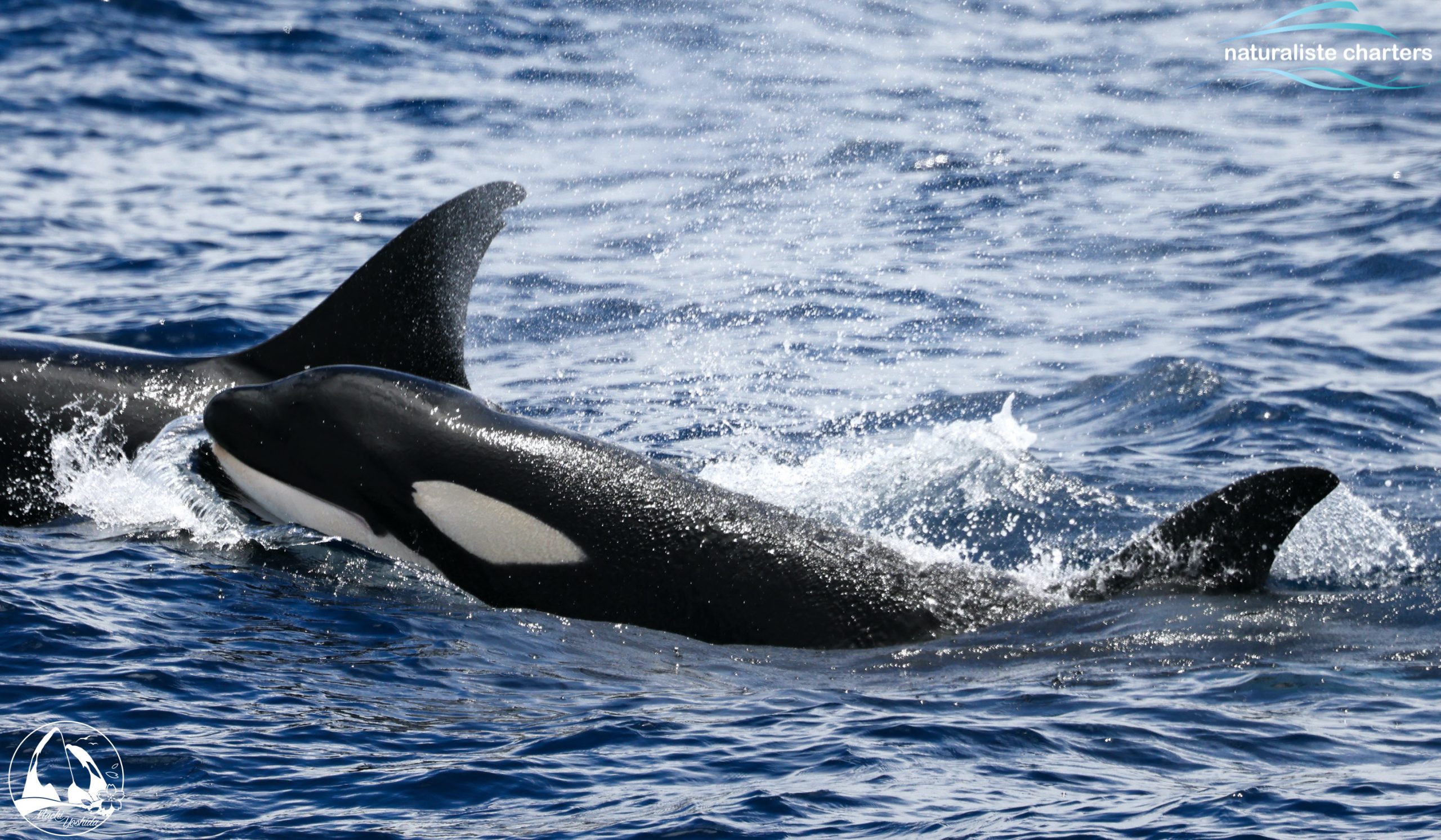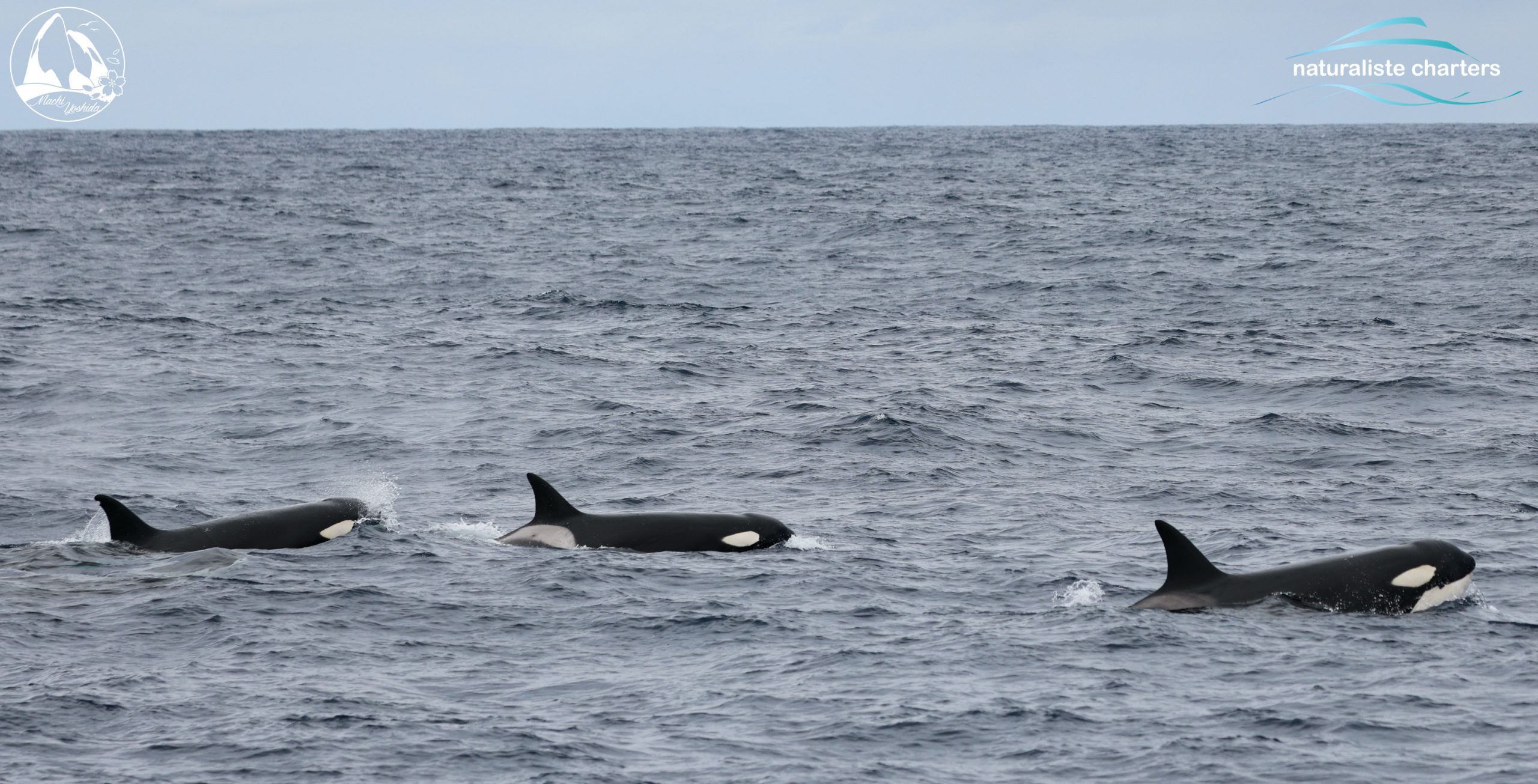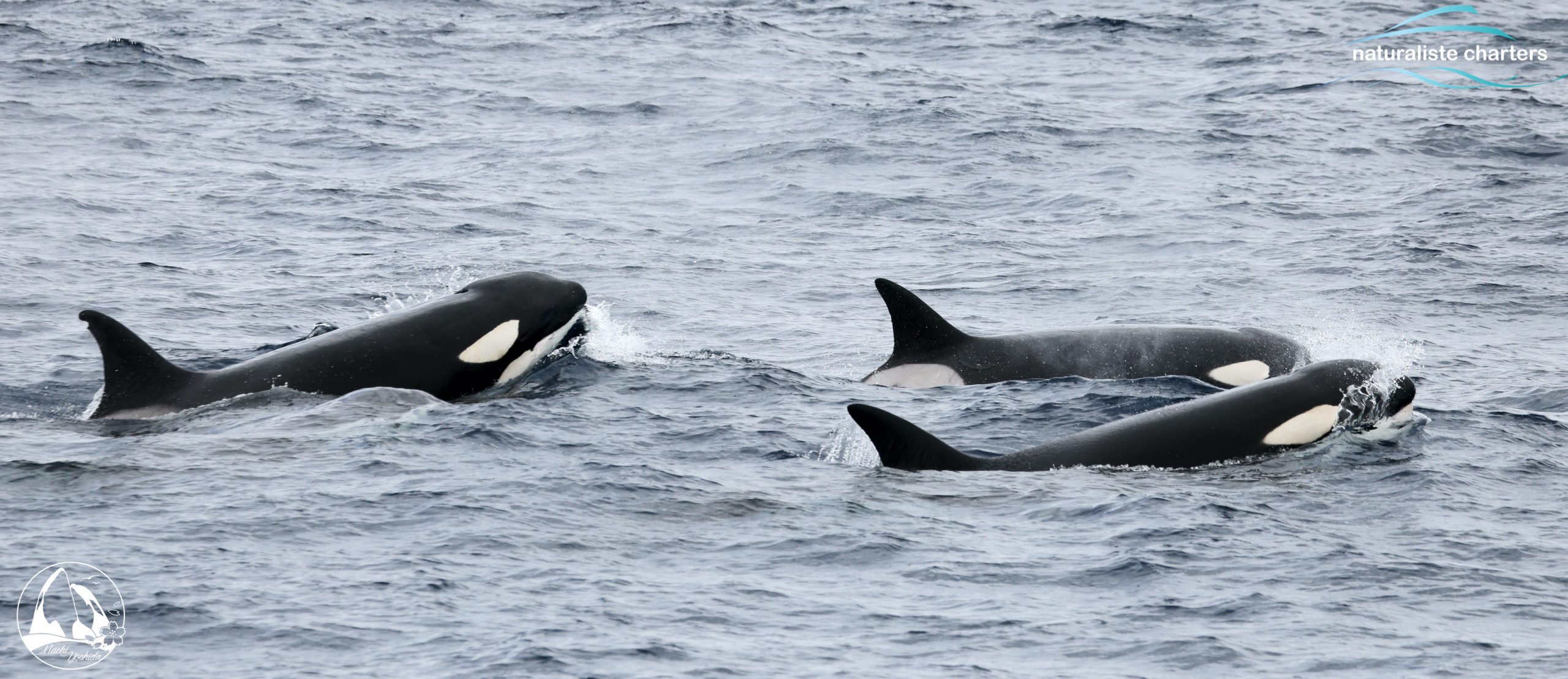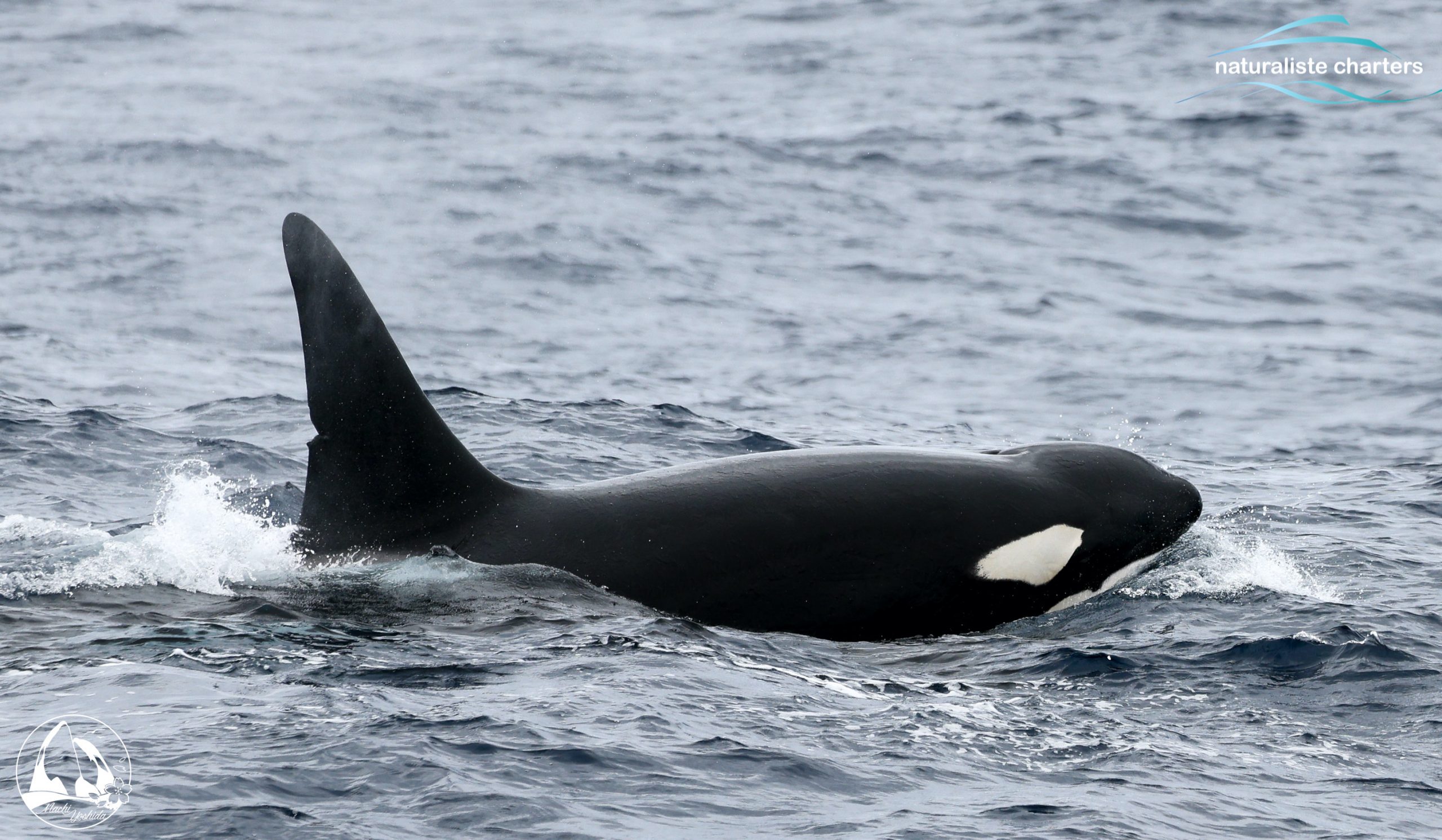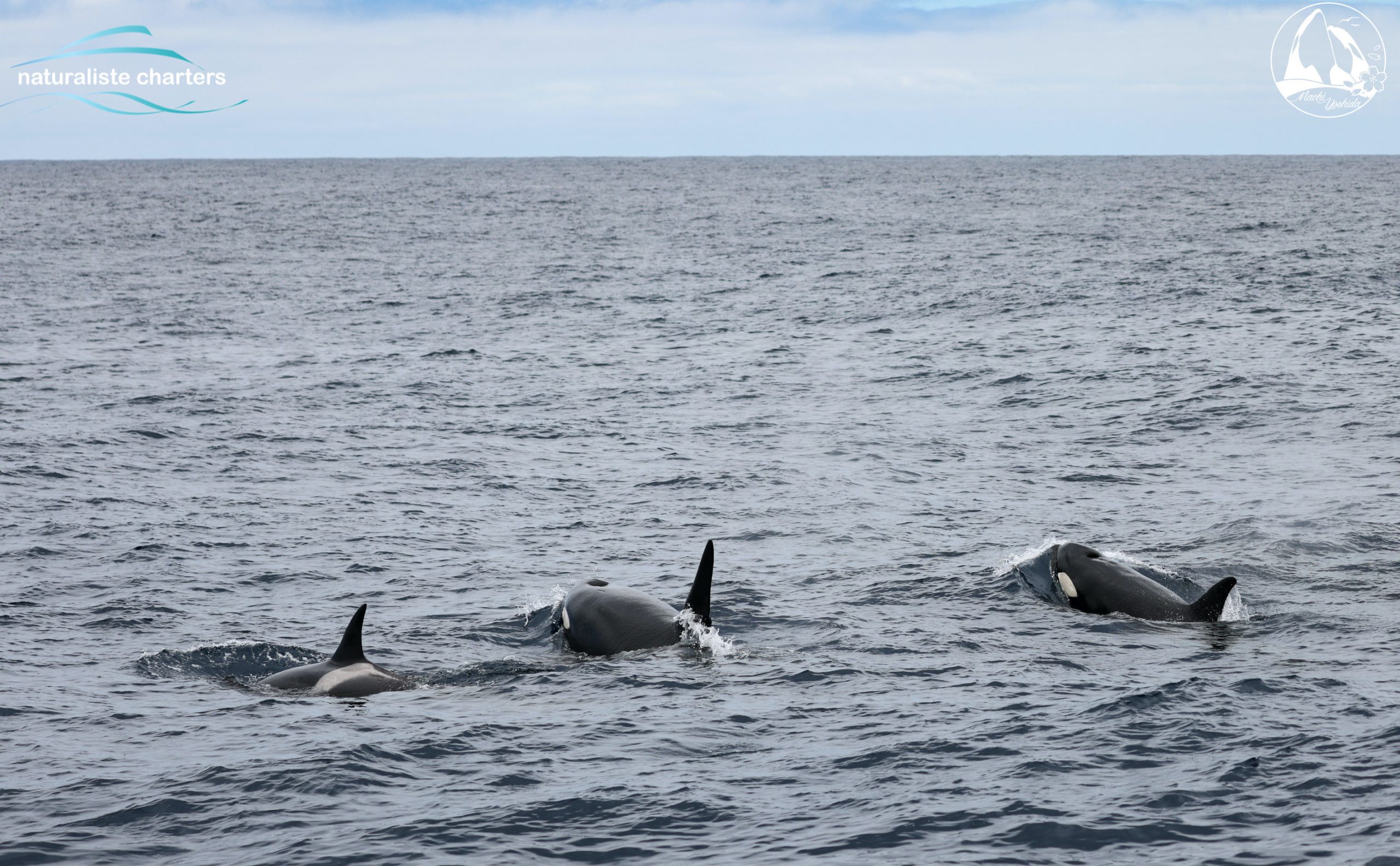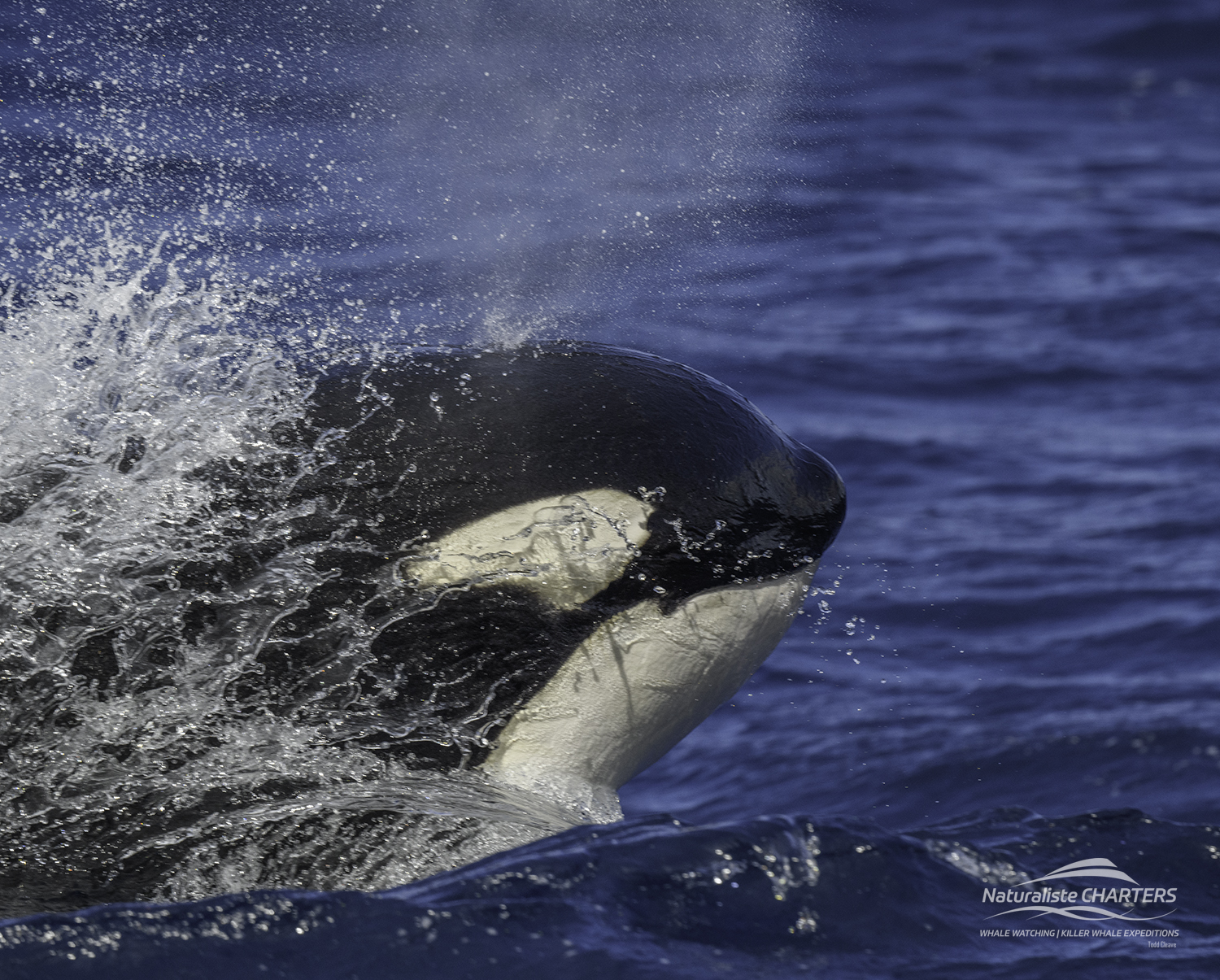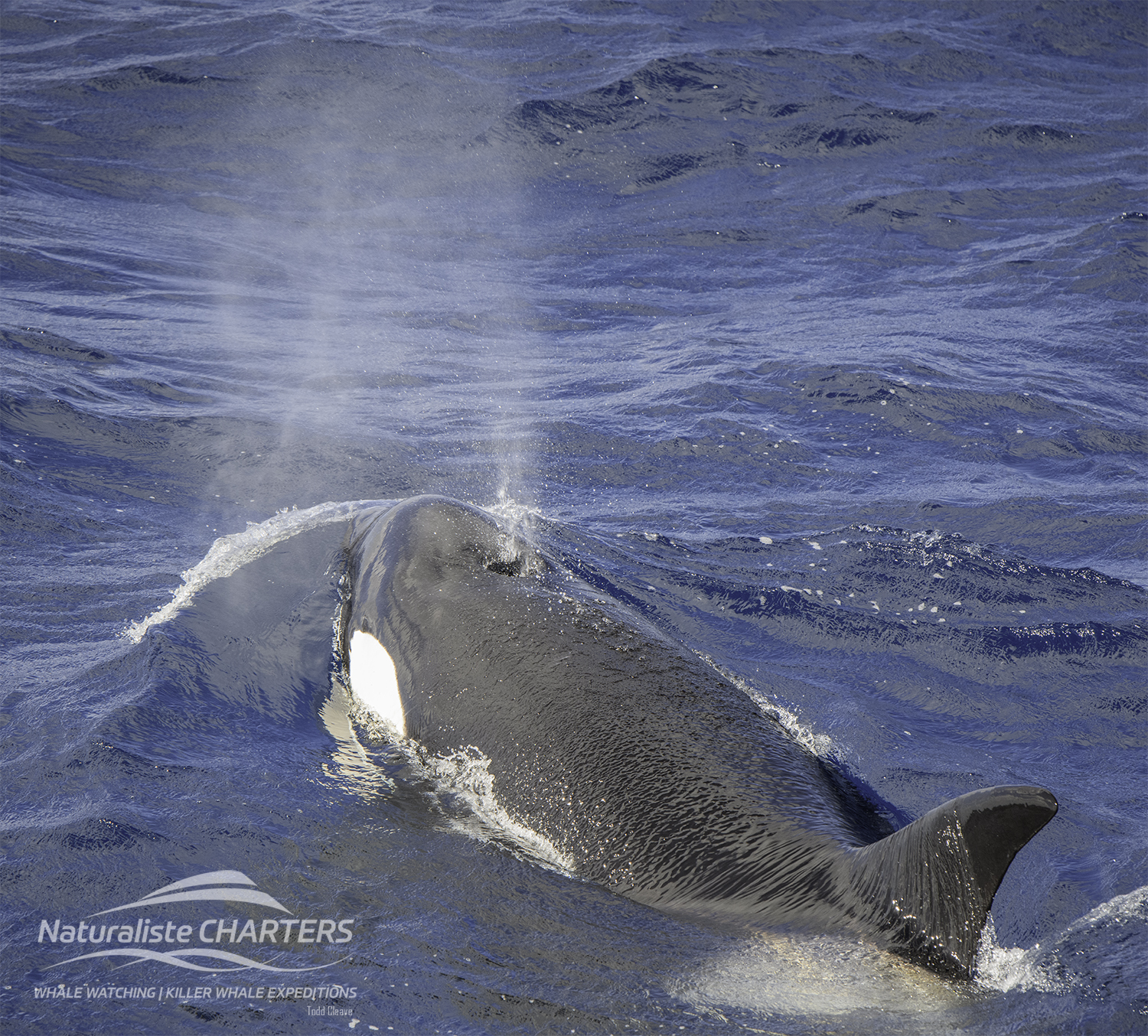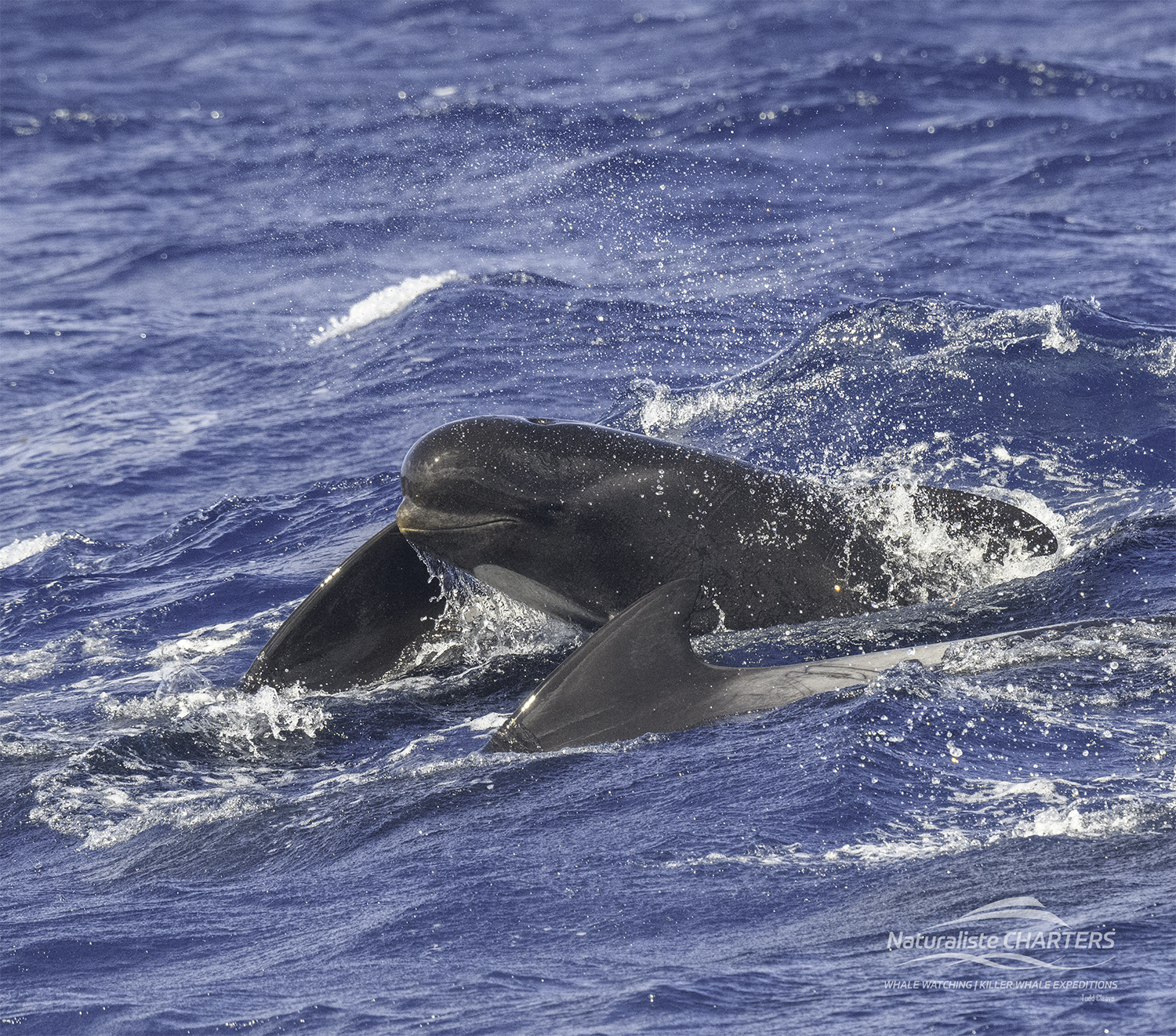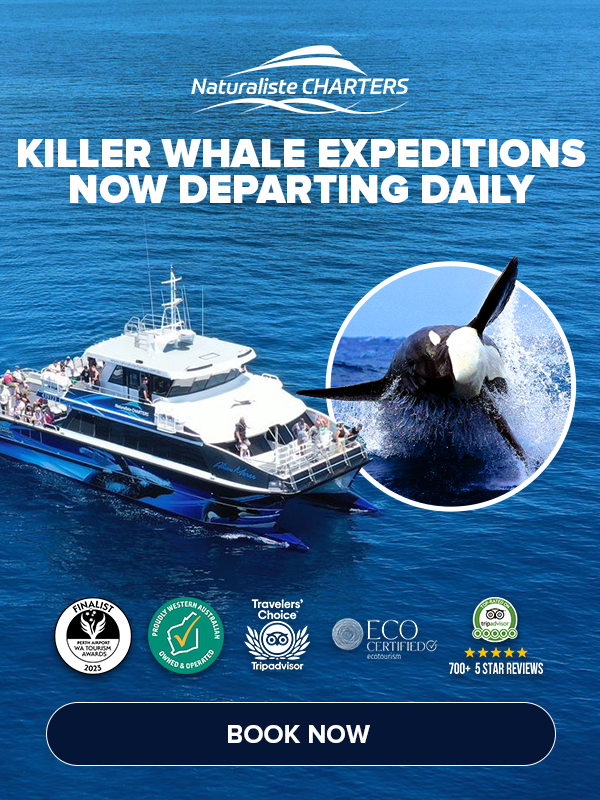12.01.2021
Today was like something out of a postcard. Calms seas creating a glassy, silk effect to the water, perfect for orca whale watching.
On arrival to the hotspot it was eerily calm. No orca blows to be seen and no wind. We slowed – matching the mood of the sea, heading south through the hotspot. To our delight, it wasn’t long before we saw 1, 2 and 3 light blows appearing up ahead. We ventured over to find El Notcho and pod moving along very slowly. Their blows were so faint they were almost non-existent! All six whales in this pod were spread out over a couple of hundred metres and were moving slowly. One could only assume sleeping behaviour as they were close to the surface and moving along very slowly.
We tucked in next to them and merged into their sleeping pattern. We moved east out to the Hood Canyon, once here, we turned 180 degrees and went straight back to the hotspot. The two-track lines heading east and west almost perfectly overlapped… How did the orca know how to go so straight? This we do not know but we do know about their sleeping! Read on below to find out more. The orcas picked up the pace into hunting mode but it was like something out of a postcard. With the Bremer Bay dunes in the background, calm silk-like water filling our view and a pod of perfectly healthy orca cruising along made for a great orca whale watching experience. Talk about picture perfect.
Micro-sleeping is the orcas’ style of resting/sleeping.
Birds and dolphins also adopt a similar method to the orcas which is very different to us, humans! We have a voluntary breathing reflex and when asleep or unconscious our bodies will continue to breathe. Orcas must remain conscious since they do not have this automatic reflex. They have to be thinking about their next breath and actively decide to take it. If they went into a deep unconscious sleep they would consequently suffocate or drown!
So if they can’t fall fast asleep, how do they rest??
To compact, this tricky problem orca will shut down one-half of their brains to sleep while the other half stays alert focusing on breathing and staying upright!! The alert half will also be on the lookout for danger and any food in the area. It is said that while they micro-sleep, one eye will be shut. The closed eye is on the opposite side of the sleepy brain for example, the right eye will be shut while the left side of the brain snoozes! This is specifically known as unihemispherical sleep and both sides will alternate to allow adequate rest.
When they are sleeping the orcas swim slowly and a rhythmical pace and the pod is typically close together to ensure maximum safety.
No two days are the same on an adventure day with Naturaliste Charters. We hope to see you join us along for an orca whale watching experience like no other!

